Riding a skateboard on a slope is an exhilarating experience that combines precision, balance, and control. Whether you’re tackling an uphill climb or navigating a downhill race, mastering the right techniques can transform your skills and make the difference between a thrilling ride and a challenging one. In this guide, we’ll explore everything you need to know to confidently ride a skateboard on a slope, from understanding hill dynamics to applying proper techniques. Whether you’re a seasoned rider or just starting out, these tips will help you navigate slopes with confidence and style.
Key Takeaways
– Adjust your stance to gain better control and stability while skateboarding on slopes.
– Use ollies or jumps to navigate smaller bumps effectively.
– Walk your skateboard when encountering large obstacles to maintain control.
– Lean back slightly to maintain balance on bigger bumps or gaps.
– Practice specific tricks like manuals or kickflips for smoother navigation.
– Always wear protective gear to minimize risks of injury.
– Start with small bumps and gradually challenge yourself on steeper slopes.
– Maintain proper body position to ensure stability and control.
– Use both hands for better control, especially when going downhill.
– Look ahead to avoid obstacles and stay focused while riding.
– Shift your weight appropriately—forward for uphill, backward for downhill.
– Keep your board well-maintained for optimal grip and traction.
– Practice on flat ground first to build confidence and skills.
– Stay patient and adaptable when facing different slope conditions.
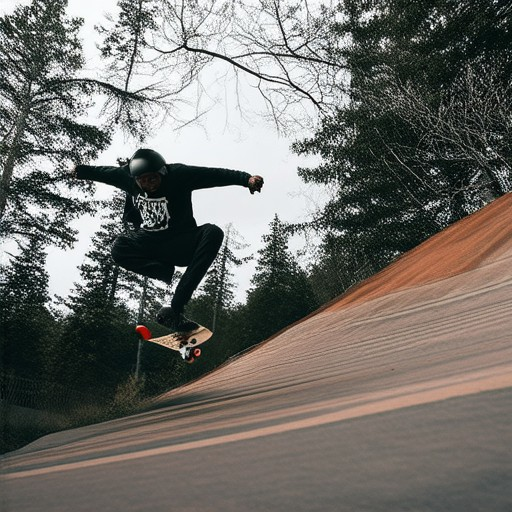
How to Go Up a Slope on a Skateboard
To successfully navigate a slope on a skateboard, focus on body positioning, foot placement, and balance. Here’s a step-by-step guide:
- Start with a Basic Approach : Begin on the lower part of the ramp and gradually work your way up. Keep your skateboard steady by placing one foot slightly ahead of the other.
- Bend Your Knees : As you roll up the ramp, bend your knees to stay low and maintain control. This allows you to maneuver easier and prevents sliding off the board.
- Weight Distribution : Shift your weight backward slightly as you move up the slope. This helps in maintaining traction and preventing you from losing balance.
- Foot Placement : Place your feet shoulder-width apart and slightly toes-down. This stance provides better stability and helps in managing your momentum.
- Pivot and Balance : As you near the peak, pivot your upper body gently to adjust your position. Keep your eyes forward to spot any potential obstacles.
- Practice on Flats First : Before attempting slopes, practice on flat surfaces to build confidence and control. This foundation will make climbing slopes feel more manageable.
By following these tips, you’ll gain confidence and master navigating slopes on your skateboard. Remember to always wear protective gear and take it slow when learning new tricks. For more tips and resources, visit kickflipboards.com .
How to Go Down a Slope on a Skateboard?
To descend a skateboard slope effectively, follow these key steps:
- Stay Balanced : Maintain a steady stance with your feet shoulder-width apart and knees bent slightly for better control.
- Foot Placement : Point your toes slightly downhill to keep moving forward as you roll down.
- Weight Distribution : Keep your weight distributed evenly between your feet, especially on uneven surfaces.
- Brake Gently : Use your back foot to gently apply pressure and slow down without locking up.
- Look Ahead : Stay focused on the path ahead to anticipate any bumps or obstacles.
- Adjust for Surface : If the slope is rough, consider slowing down more and staying alert to avoid slipping.
For added stability, practice on smoother surfaces before tackling steeper slopes. Always wear protective gear to minimize risks. Check out our guide on balancing on a skateboard for further improvement.
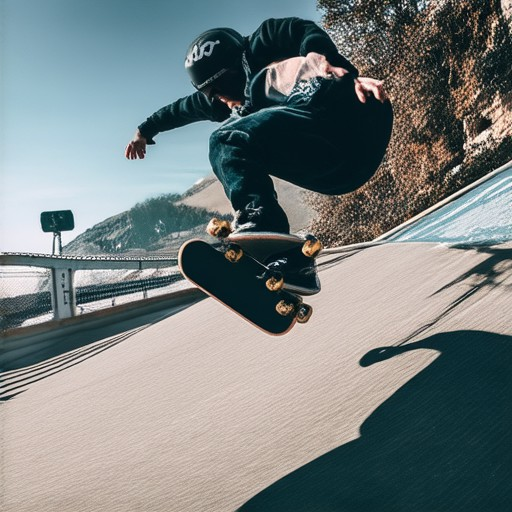
How to Ride a Skateboard Up a Hill
To successfully ride a skateboard uphill, follow these organized steps:
- Build Speed on Flat Ground : Start by gaining momentum on the flat section before the hill begins. Pump your legs energetically to establish a good speed, which will aid in conquering the incline.
- Technique on the Incline :
- Pump and Pop : As you ascend, use a pumping motion with your legs to maintain balance and momentum. If you lose balance, attempt a nose manual or kickflip to regain control.
- Board Flexibility : Leverage the skateboard’s flexibility. Stay aggressive with your movements to prevent sliding back. Keep your weight forward to maximize traction.
- Stay Focused and Balanced : Look ahead to the top of the hill, not just the immediate slope. Maintain a steady stance and distribute your weight evenly. Shift your weight slightly forward to engage the front wheels effectively.
- Use the Environment : If available, utilize features like curbs or small ramps at the base of the hill to gain extra momentum. If not, rely on the flat ground to build sufficient speed.
- Avoid Common Mistakes : Prevent leaning too far back or inadequate front-weighting, which can hinder progress. Practice correcting a slid-out board without losing excessive speed.
By combining these strategies, you can master riding a skateboard uphill with confidence and efficiency.
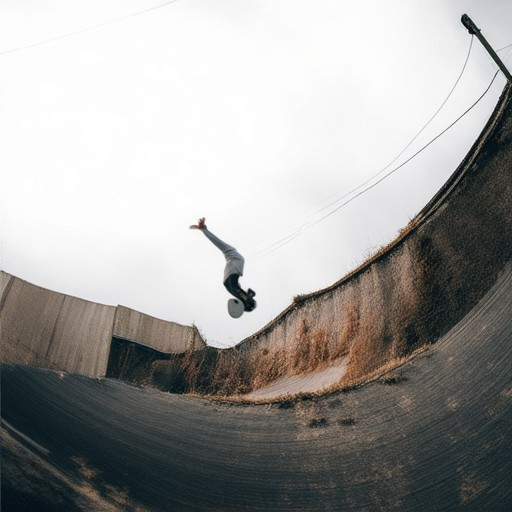
How to Skateboard on Uneven Ground
Skateboarding on uneven ground requires patience, balance, and practice. Here are some effective strategies to navigate bumps and rough surfaces:
- Adjust Your Stance:** Stand closer to the front of your skateboard to gain better control over the board. This helps you maintain stability while moving over uneven terrain.
- Use Ollies or Jumps:** For smaller bumps, pop an ollie or jump over the obstacle. Practice this on flat ground first to master the technique before applying it on uneven surfaces.
- Walk the Board:** If you encounter a large obstacle or a significant bump, walk your skateboard up to it. This allows you to approach the challenge with greater control and reduces the risk of falling.
- Lean Back for Balance:** When encountering a larger bump or gap, lean back slightly to keep your body upright. This helps maintain balance and prevents you from tipping over.
- Practice Specific Tricks:** Learn tricks like manuals or kickflips to gain momentum over small rises or gaps. These techniques can help you navigate uneven ground more smoothly.
- Wear Protective Gear:** Always wear knee pads, elbow pads, and a helmet to protect yourself against potential falls on uneven surfaces.
- Start Small and Progress Gradually:** Begin with minor bumps and gradually move on to larger obstacles. Consistent practice on various terrains will enhance your skills and confidence.
Remember, mastering uneven ground takes time and practice. Prioritize safety and gradually challenge yourself to improve your skills.
What Are the Best Tips for Riding a Skateboard on a Slope?
Riding a skateboard on a slope can be challenging but rewarding with the right approach. Here are some expert tips to help you navigate slopes safely and effectively:
- Start Slowly:** Begin on a gentle slope and gradually progress to steeper ones. This allows you to get comfortable with the terrain before tackling more difficult slopes.
- Maintain Proper Body Position:** Keep your knees bent and your center of gravity close to your board. Distribute your weight evenly, especially when going downhill, to avoid tipping over.
- Use Both Hands for Control:** Hold the nose of your board with one hand and use the other hand for breaking and balancing, especially when going downhill.
- Look Ahead and Stay Focused:** Always keep an eye on the path ahead to avoid obstacles and maintain control. Staying focused helps you react quickly to changes in the slope.
- Shift Weight Appropriately:** When going downhill, shift your weight backward slightly to increase stability. On an uphill, shift your weight forward to gain momentum.
- Wear Protective Gear:** Make sure you have a helmet, knee pads, and elbow pads. These items can significantly reduce the risk of injury, especially on uneven surfaces.
- Keep Your Board Well-Maintained:** Regularly check and wax your board to ensure it’s smooth and provides good traction. A clean deck reduces the risk of sliding.
- Practice on Flatter Ground First:** Before attempting slopes, spend time practicing your balance and control on flat ground to build confidence and skill.
Remember, riding on slopes requires patience and practice. Take it step by step, stay aware of your surroundings, and enjoy the thrill of navigating different terrains. For more tips and resources, visit Kickflip Boards .
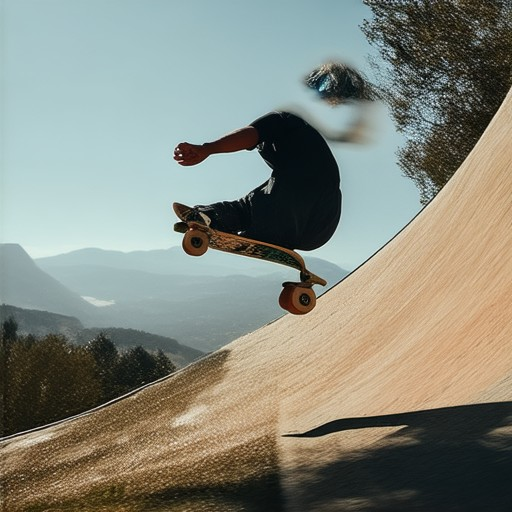
What Are the Best Tips for Riding a Skateboard on a Slope?
Here’s a step-by-step guide to mastering skateboarding on slopes:
- Start Slow and Steady : Begin on a gentle slope and gradually increase difficulty. Take your time to get comfortable with the incline before attempting tricks or faster movements.
- Foot Placement and Weight Distribution : Position your feet slightly apart to maintain balance. Distribute your weight evenly, shifting your stance depending on whether you’re going uphill or downhill.
- Uphill Technique : When climbing, shift your weight backward slightly to gain traction. Use your legs to push down and maintain control. Keep your speed steady to avoid sliding.
- Downhill Control : On descents, stay centered and keep your eyes forward. Use your brakes wisely and avoid sudden stops to prevent sliding or losing balance.
- Balance and Stability : Keep your knees bent and your core engaged. A loose stance can lead to instability, especially on uneven terrain.
- Braking Properly : Apply pressure to the rear wheels for maximum stopping power. Avoid sliding the tailbone back when braking.
- Look Ahead : Stay focused on the path ahead to anticipate obstacles and changes in slope steepness.
- Board Maintenance : Ensure your skateboard is well-waxed for optimal grip. Check the trucks for tightness and adjust as needed for better control on slopes.
- Practice on Flatter Ground : Build strength and coordination on flat surfaces before tackling slopes. Practice popping tricks and maintaining balance.
- Stay Patient and Adapt : Every slope is different. Adjust your technique based on the surface and angle. Don’t rush the learning process.
By following these tips, you’ll gain confidence and improve your skills on various slopes. Remember, practice makes perfect, and enjoying the ride is just as important as mastering the tricks.
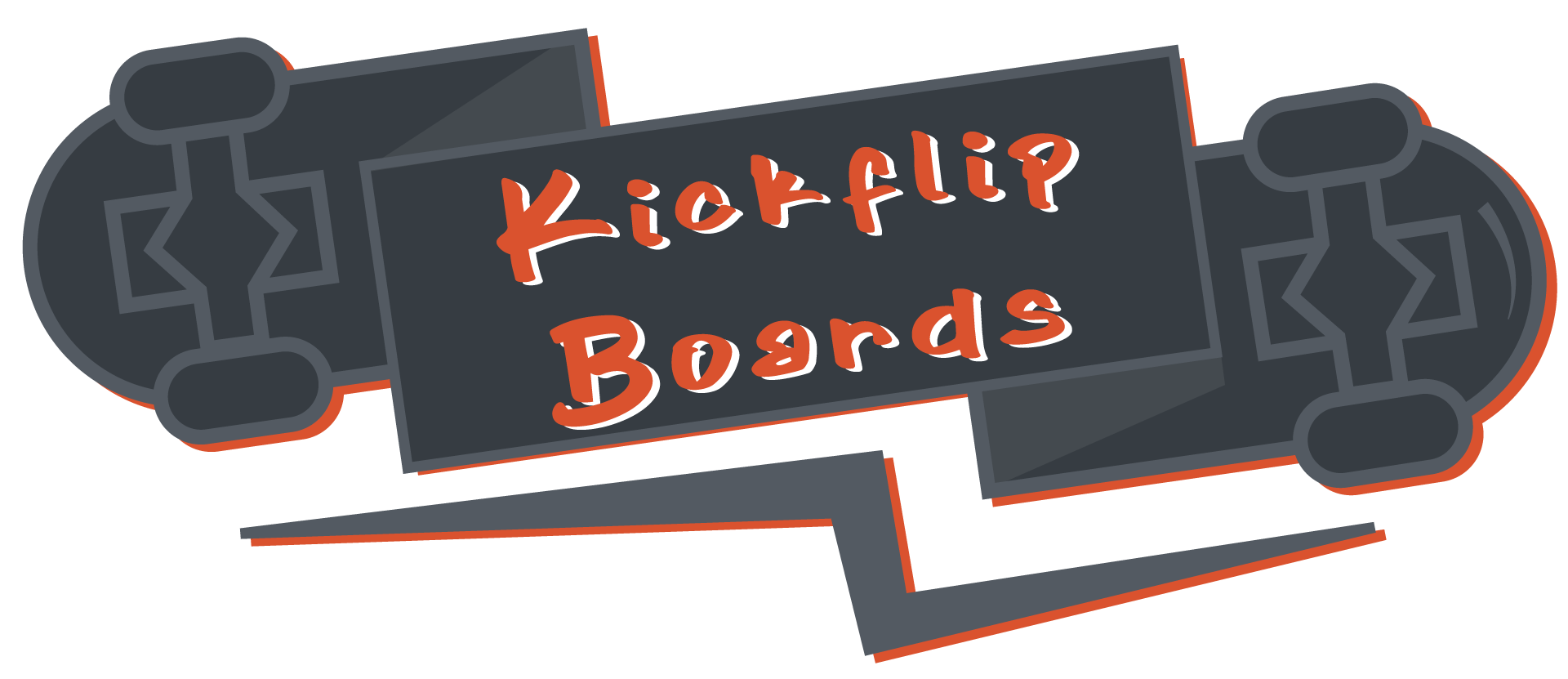



0 Comments